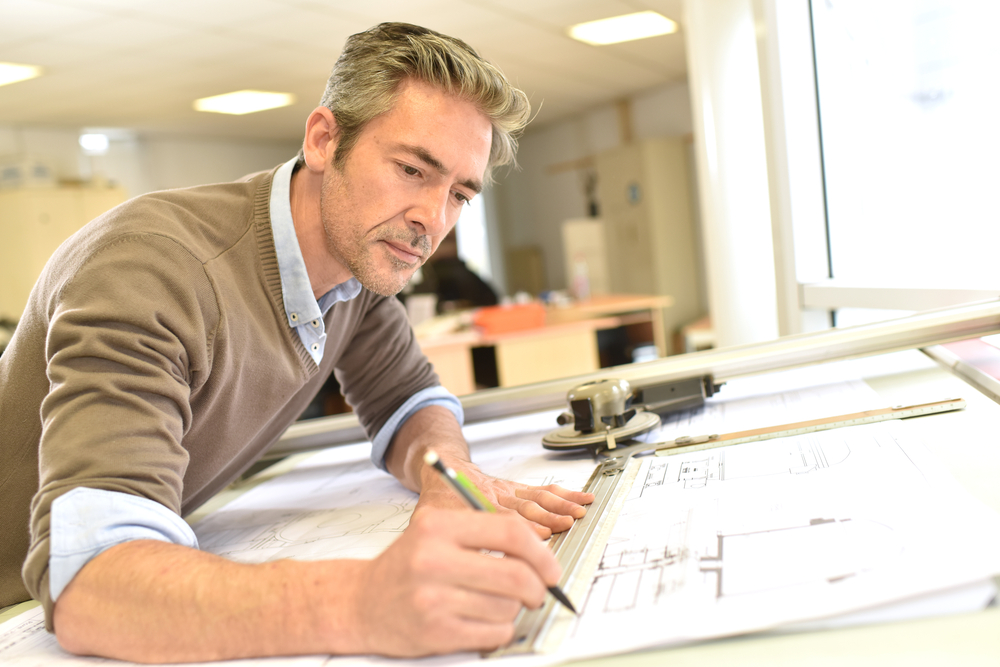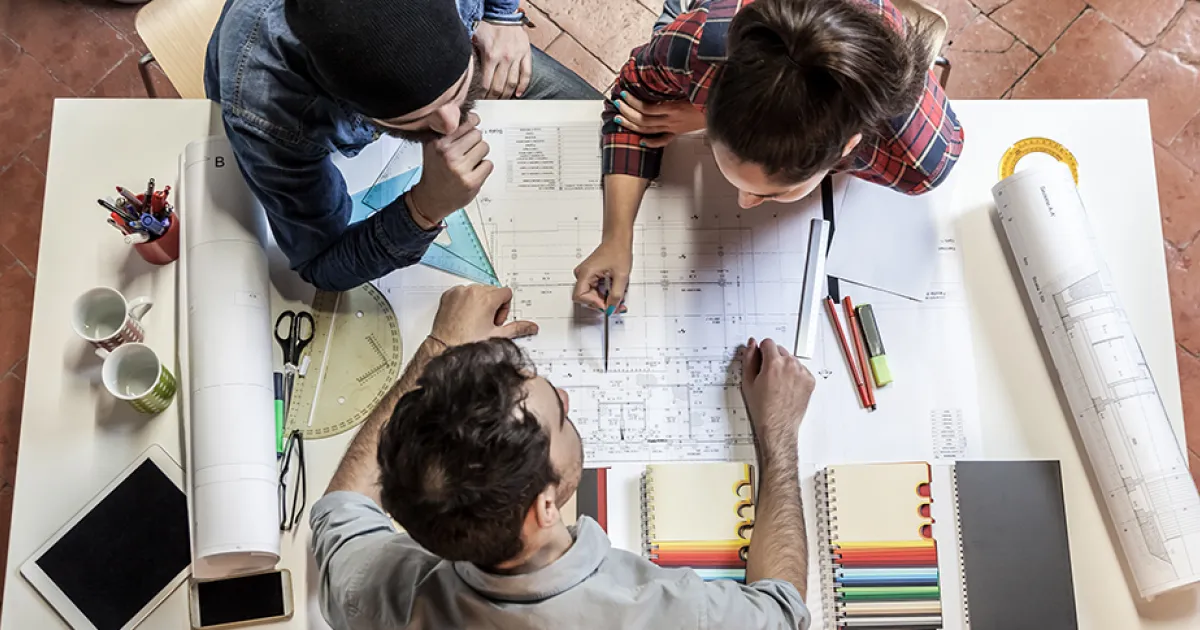Comprehending the Diverse Occupation Paths Available for Aspiring Architect
As an ambitious Architect, you have a globe of career paths awaiting you. Each course uses unique difficulties and chances to apply your creative thinking and technological expertise. Whether you're drawn to standard style or the subtleties of sustainable style, there's a specific niche that straightens with your interests. Understanding these varied alternatives can shape your expert journey, but which instructions will you choose to discover first?
Typical Architecture: Designing Structures and Structures
Typical design focuses on making buildings and frameworks that blend functionality with visual appeal. Your styles can reflect social heritage, showcasing local customs while fulfilling modern requirements.
You'll establish skills in drafting, model-making, and site evaluation, enabling you to visualize and connect your concepts successfully. Involving with customers, you'll require to comprehend their vision and translate it right into feasible layouts.
Furthermore, developing codes and sustainability practices are important in your work, guaranteeing your structures are safe and ecologically pleasant. As you expand in your occupation, you'll locate chances in household, industrial, and even remediation jobs, each offering unique challenges. Accepting typical architecture leads the way for a fulfilling profession that pays tribute to the past while shaping the future.
Urban Preparation: Shaping Areas and Public Spaces
As a hopeful Architect, you can play an essential role as an urban organizer, changing exactly how neighborhoods communicate and function. By employing area involvement approaches, you'll ensure that locals have a voice fit their environment. And also, incorporating sustainable design concepts will certainly assist create rooms that not only satisfy today's needs yet likewise safeguard the future.
Duty of Urban Planners
While numerous may assume of architects as the sole enthusiasts behind structures, city planners play a necessary role in shaping the wider landscape of areas and public spaces. By collaborating with various stakeholders, you'll help design parks, transportation systems, and domestic areas that promote social interaction and availability. Your expertise in spatial design and community dynamics allows you to picture future development while preserving social heritage.
Community Interaction Techniques
Efficient neighborhood interaction techniques are important for metropolitan coordinators to guarantee that the voices of homeowners are listened to and valued in the preparation procedure. To promote significant dialogue, you should focus on open discussion forums and workshops where area participants can express their ideas and problems. Usage surveys and social networks to reach a broader target market, making certain varied point of views are included. Working together with regional companies can enhance trust fund and help with much deeper links. It is very important to provide clear information concerning decision-making processes and suggested tasks, allowing residents to feel educated and encouraged. By proactively paying attention and incorporating responses, you'll produce rooms that show the area's requirements, inevitably bring about more effective and sustainable metropolitan atmospheres. Embrace openness and continuous dialogue for long-term effect.
Sustainable Style Principles
When making city rooms, incorporating sustainable design principles is essential for creating environments that flourish both ecologically and socially. You need to begin by concentrating on power performance, making use of products that lower waste and advertise recycling. Take into consideration incorporating eco-friendly spaces, like parks and gardens, to improve biodiversity and enhance air top quality. Advertising walkability and public transport can minimize reliance on cars and trucks, cultivating a much healthier neighborhood.
Designing with water conservation in mind is additionally essential-- consider rain yards and permeable surfaces to handle stormwater. Involving area members throughout the planning procedure assurances that the rooms you produce fulfill their requirements and encourage social communication. By embracing these concepts, you'll add to dynamic, lasting metropolitan landscapes that profit every person.

Landscape Style: Creating Lasting Exterior Environments
As you check out landscape style, you'll discover vital layout principles that create practical and lovely outdoor spaces. Sustainable methods play a vital function in making certain these atmospheres grow while lessening ecological impact. Plus, you'll discover a range of job opportunities that allow you to make a real difference in how people communicate with nature.
Style Principles in Landscape
Comprehending style principles in landscape design is important for producing sustainable outside atmospheres that balance with nature. You'll need to contemplate elements like range, equilibrium, and proportion to guarantee your layouts really feel cohesive and inviting. Incorporating indigenous plants not just improves biodiversity but additionally reduces water use, making your landscape durable. Believe regarding the flow of room and exactly how people interact with it; paths and seating locations ought to welcome expedition and relaxation. In addition, pay focus to seasonal modifications, developing with materials that enhance the surroundings year-round (Architect). By prioritizing sustainability and visual appeals, you can produce exterior areas that enrich the area and promote health. Accepting these principles will certainly set a solid foundation for your job in landscape design.
Sustainable Practices Summary
Lasting methods in landscape architecture not just concentrate on aesthetic appeals however also focus on ecological wellness and source conservation. You can make areas that advertise soil health, such as making use of natural products and practicing permaculture concepts. Eventually, these techniques ensure your styles profit both people and the setting for years to come.
Profession Opportunities Expedition
With a solid structure in lasting methods, landscape style offers a selection of profession courses that permit you to make a significant effect on the atmosphere. Urban coordinators often collaborate with landscape architects to create green rooms in city setups, improving city livability. If you're passionate about education and learning, take into consideration coming to be a landscape style teacher, inspiring future generations.
Sustainable Layout: Concentrating on Eco-Friendly Practices
As you explore your career in style, welcoming green methods can set you apart in an affordable area. Sustainable layout concentrates on producing structures that lessen environmental influence while improving occupant health. By integrating renewable products, energy-efficient systems, and sustainable structure techniques, you'll add to a greener future.
Begin by gaining expertise of eco-friendly certifications like LEED or BREEAM, which can reinforce your qualifications. Take into consideration how all-natural light, ventilation, and thermal performance can optimize layout. Collaborate with designers and environmental experts to innovate options that reduce waste and save sources.
Don't fail to remember the relevance of community participation-- interesting local stakeholders can influence layouts that harmonize with the atmosphere. As customers increasingly focus on sustainability, your know-how in eco-friendly methods will not just attract projects yet additionally accomplish your passion for accountable design. Accept this crucial aspect of the occupation, and see your profession flourish.
Historic Preservation: Safeguarding and Restoring Cultural Heritage
While you start on your architectural trip, consider the necessary function of historical preservation in preserving our social heritage. This field concentrates on the defense and repair of significant buildings, websites, Related Site and structures that inform the stories of our past. By participating in historic conservation, you'll assist protect the building tradition that shapes area identification.
As a historical preservation Architect, you'll evaluate historical significance and examine the problem of frameworks. You'll work very closely with preservationists and historians to assure authentic remediation methods are used. This career path permits you to mix creative thinking with study, allowing you to develop services that appreciate initial products and workmanship.
Your work not just contributes to sustainability by recycling existing structures yet also fosters a feeling of satisfaction within communities. Accepting this course will certainly help you become a guardian of history, protecting the stories and appearances that improve our lives.
Inside Design: Enhancing Indoor Spaces
Historical conservation and interior design both share a commitment to boosting the developed setting, but they concentrate on different elements. While historical preservation emphasizes maintaining a structure's historic and cultural value, indoor style absolutely nos in on maximizing indoor rooms for capability and looks.
As an aspiring Architect, you'll locate that interior style allows you to blend creative thinking with technical abilities. You'll make areas that not just look excellent but likewise promote comfort and performance. This area involves understanding exactly how light, shade, and materials communicate within an area, affecting mood and usability.
You'll deal with different tasks, from household homes to business offices, guaranteeing that each atmosphere fulfills the needs of its owners. By focusing on individual experience, you can change interiors into practical and motivating spaces, making a considerable influence on how people interact with their surroundings. Embrace the possibility to improve indoor settings and shape the way people live and work.
Industrial Layout: Combining Performance With Aesthetics
Industrial style plays an important duty in creating items that effortlessly blend aesthetic appeals with functionality, making certain that what you use everyday is not only aesthetically appealing yet additionally useful. As a hopeful Architect, you could involve on your own in this field, focusing on developing whatever from furnishings to consumer electronic devices. Your work entails understanding user demands, products, and manufacturing procedures, permitting you to create innovative remedies that enhance everyday experiences.
In commercial design, you'll frequently collaborate with online marketers, suppliers, and engineers, making sure that your designs are not just lovely but additionally possible. You'll learn to stabilize form and feature, focusing on use without giving up design. By sharpening your skills in sketching, 3D modeling, and prototyping, you'll be well-equipped to bring your ideas to life. This profession course supplies a vibrant setting where creative thinking meets functionality, making it a fulfilling choice for designers curious about forming the items of tomorrow.
Often Asked Concerns
What Educational Qualifications Do I Required to End Up Being an Architect?
To become a designer, you'll require an expert degree in design, usually a Bachelor's or Master's. Additionally, you'll have to complete an internship and pass the Architect Enrollment Assessment to exercise legitimately.
Are There Accreditation Demands for Various Architectural Career Paths?
Yes, there're accreditation needs for numerous building paths. Architect. You'll require to pass tests, complete internships, and in some cases seek specialized training, relying on your chosen emphasis, like landscape design, metropolitan style, or historical conservation
What Software Application Abilities Are Vital for Designers Today?

Just How Can I Gain Practical Experience While Examining Style?
You can obtain useful experience by interning at architectural firms, joining layout competitors, offering for area projects, or working together with schoolmates on real-world assignments. These opportunities improve your abilities and build important links in the market.
What Work Opportunities Exist Outside Conventional Design Firms?
You can explore various job possibilities outside conventional design firms, like urban preparation, interior decoration, landscape visite site style, building and construction monitoring, property development, or perhaps functions in sustainability consulting. Each offers distinct challenges and incentives.
Whether you're attracted to conventional design or the nuances of lasting style, there's a specific niche that lines up with your interests.When developing metropolitan spaces, including lasting layout concepts is critical for creating settings that thrive both ecologically and socially.As you discover landscape style, you'll discover crucial design concepts that create more tips here useful and beautiful outdoor spaces.Comprehending design principles in landscape architecture is crucial for developing sustainable outside atmospheres that balance with nature.In industrial style, you'll often collaborate with designers, marketing professionals, and producers, ensuring that your styles are not only beautiful but additionally feasible.